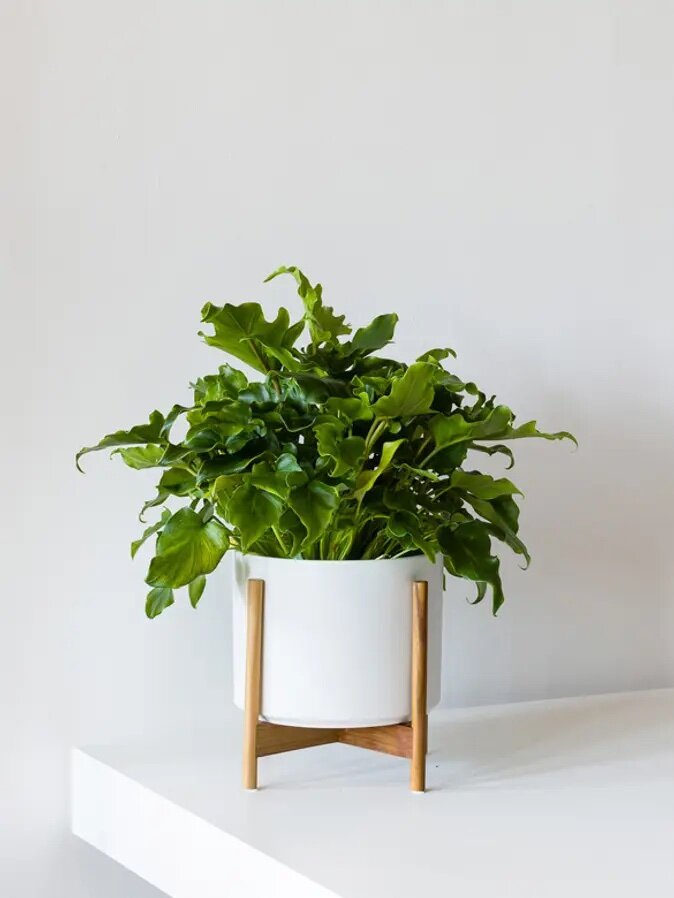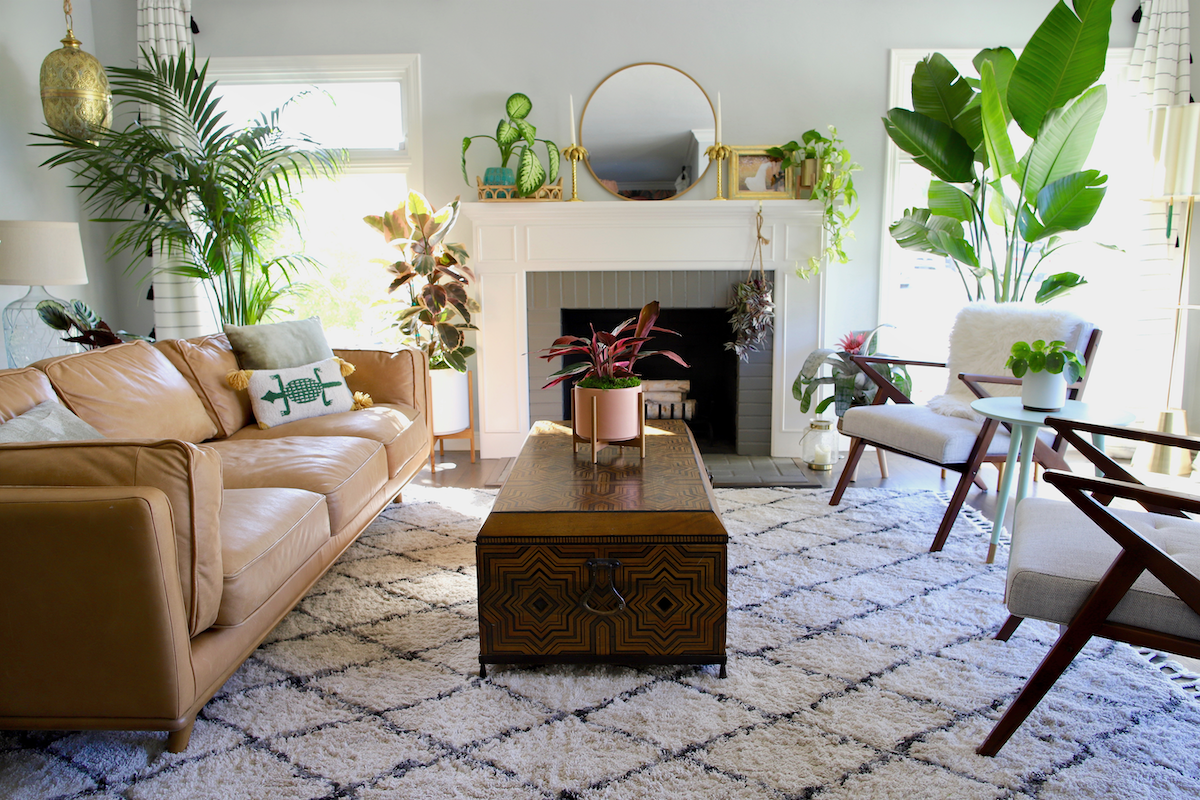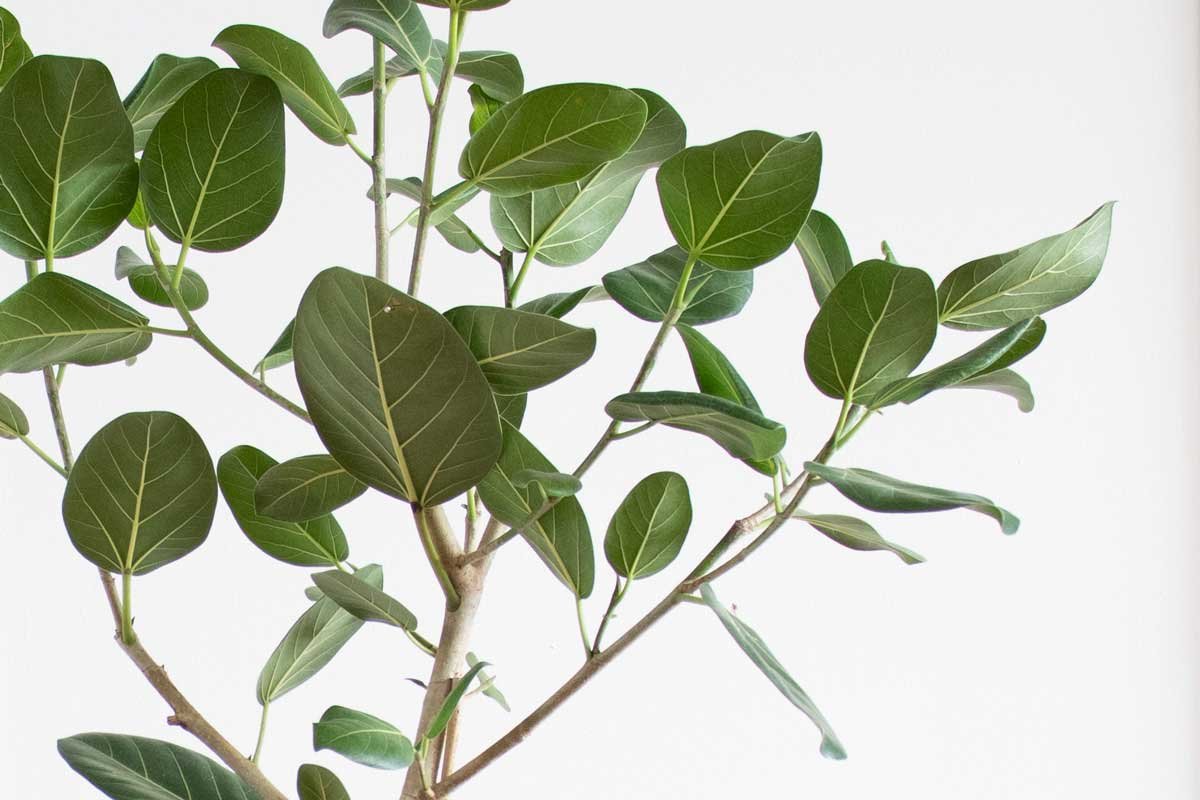How to Care for and Grow Your Hope Philodendron
How to care for and grow the Hope Philodendron AKA Philodendron Selloum
Full, serrated leaves and lots of personality, the Hope Philodendron is a plant that enjoys a shady, tropical-like home, similar to its native regions of South America. Here’s everything you need to know to keep the Hope Philodendron healthy, happy and growing.
Light
Prefers bright or medium indirect light
It can adjust to lower levels of light, but will grow slower and turn darker green
Avoid harsh direct sunlight that may burn your plant’s leaves
Water
Water about once a week, when the topsoil is just dry to the touch
Mist between waterings to provide humidity
Growth
In prime conditions, the Hope Philodendron grows relatively fast and can reach up to two feet in height
Fertilize your Hope Philodendron 1-2 times per month in the spring and summer with indoor plant food, or foliar feed year round.
Natural Plant Food
Nourish your plants with this specially-formulated organic liquid plant food. Our Boost Vitaminé is made with potent nutrients from nature to help your plants grow and thrive all year long.
$24
Common problems with the Hope Philodendron
Yellow leaves - overwatering or too much light
Symptom - pale yellow leaves, or new leaves unfurling pale or yellow
Cause - in most cases, the cause of yellow leaves is overwatering. While the Hope Philodendron likes moisture, it does not want too much moisture or to become waterlogged. If the plant is not overwatered, it’s possible that the plant is exposed to too much light.
Remedy - ensure that the soil is not waterlogged — remove from plastic nursery pot and investigate the roots. If they are soaked or emit a stench, it’s possible your plant has root rot and you will need to repot. If it’s just slightly damp, leave the plant in a well-ventilated area with plenty of indirect light and hold off on watering.
Brown tips - underwatering
Symptom - edges and tips of plant are brown and dry or crispy
Cause - not enough water
Remedy - give your plant a thorough shower, allowing all the roots to have a chance to drink and refresh. Wait until water has drained before returning to decorative pot.
Brown spots - overwatering or fungal bacteria
Symptom - wet or soggy brown spots on new and or old leaves
Cause - overwatering or fungal bacteria
Remedy - ensure that the soil is not waterlogged — remove from plastic nursery pot and investigate the roots. If they are soaked or emit a stench, it’s possible your plant has root rot and you will need to repot. If it’s just slightly damp, leave the plant in a well ventilated area with plenty of indirect light and hold off on watering.
How to maintain a beautiful and healthy Hope Philodendron
Take care of your Hope Philodendron and it will take care of you! Below are simple tips to continue caring for and growing your Hope Philodendron over time.
Pruning - the foliage of this plant can get wild! If the plant is taking up too much space, or has unattractive, old, or “leggy” vines, you can safely trim back with a clean blade, this will give your plant more energy to grow new leaves!
Trimming - if there is just a small portion of a leaf that was damaged such as the edges, trim off any discoloration or blemishes by following the natural lines and shape of the leaf.
Cleaning - regularly remove dust to ensure your plant can soak in as much light as possible. Use a damp cloth and gently wipe the leaf clean.
How to grow and repot the Hope Philodendron
Growing - in prime conditions with the right light/water/temperature balance, Hope Philodendron plants are fast growers. After some time, if you don’t see any new growth, consider adjusting one of its elements. During spring and summer, use a diluted fertilizer to give your plant a vitamin boost.
Repotting - L&G Hope Philodendron plants come in 6” grow pots and only need to be repotted every few years if you notice the roots outgrowing the pot, or to refresh the soil and give it new nutrients. If you’d like your plant to grow larger, find a new grow pot that is 2” larger than its current pot. If you’re happy with the current size, you can reuse the same pot and simply change the soil.
Getting your hands dirty with or without a yard - spread out newspaper on the floor, remove the plant from the pot and shake off as much of the old soil as possible so that you have clean roots. At the bottom of the grow pot, and a layer of soil, then place the plant in the center of the pot and cover with new soil. Pat down firmly and water thoroughly. Place the plant in an area with bright indirect light. Your plant will take 2-4 weeks to settle from the shock and adjust to its new home.
How to propagate the Hope Philodendron
Propagating a Hope Philodendron is best down with cuttings and during spring or summer.
Make a clean cut below a node - The node is like a joint in the stem — where new leaves grow from. Using sharp, clean scissors or shears, remove a cutting from the plant and place in fresh water in an area with bright indirect light. Change the water every few days to keep it fresh.
Wait for roots to grow and repot- After a few weeks, you will see roots forming. Transfer to a pot with fresh soil and water thoroughly.
Stabilize - Keep the soil moist to the touch for one to two weeks as the cutting roots.
Hope Philodendron
This happy and hopeful philodendron will bring joy to any space with its unique wavy leaves and compact shape. They are easy to care for and on NASA’s list of best air-purifying houseplants.












